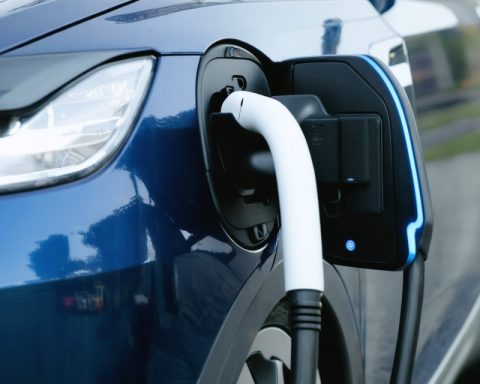- Electric vehicle (EV) batteries have a second life beyond their initial use, contributing significantly to sustainability efforts.
- Once depleted, EV batteries are rich sources of valuable minerals like cobalt, nickel, manganese, and lithium that are crucial for the circular economy.
- Advanced recycling technologies can reclaim up to 95% of these materials, enabling their reuse in new batteries or energy storage systems.
- The demand for recycling facilities highlights a positive “supply problem,” as EV batteries often exceed their expected lifespan.
- Strict recycling protocols play a critical role in preventing ecological harm and promoting resource reclamation.
- EV batteries’ end-of-life cycle emphasizes a sustainable, circular approach to technology, offering a model for broader ecological stewardship.
Beneath the sleek exteriors of electric vehicles lies an unsung hero with a story that defies the assumptions of our throwaway culture. Electric vehicle (EV) batteries, while hailed as the lifeblood of sustainable transport, often face incorrect judgment as ticking environmental time bombs ready to swell the waste abyss once they breathe their last. Instead, they venture on an unexpected path of reinvention, becoming unlikely champions in our fight for sustainability.
The narrative surrounding EV batteries often overlooks a surprising truth: once exhausted, these sophisticated power sources embark on a transformative journey. Far from the dreaded landfill fate, spent EV batteries are reclaimed as treasures brimming with sought-after elements like cobalt, nickel, magnesium, and lithium. These minerals, vital yet finite, become the driving force behind the burgeoning circular economy in the automotive industry. Thanks to advanced recycling technologies, as much as 95% of these minerals can be extracted, repurposed, and reincarnated in new batteries or even redirected to power stationary energy storage systems. This metamorphosis underpins not just practicality but profound ecological stewardship.
A growing infrastructure of EV recycling facilities eagerly awaits these spent batteries, often finding themselves bottlenecked not by waste, but by supply—the batteries outlive their anticipated lifespan, serving their purpose longer than expected. This so-called “problem” underscores a heartening reality: the lifecycle of EV batteries offers more promise than perils.
Moreover, the strict protocols for battery recycling are not merely idealistic aspirations but essential mandates to prevent ecological harm. Improper disposal of any battery can release hazardous substances that threaten groundwater and the broader environment. The recycling process not only thwarts this danger but contributes to a virtuous cycle of resource reclamation and reuse.
As we accelerate toward a sustainable future powered by innovation and diligence, the trajectory of EV batteries offers both a model and a message. In a landscape often dominated by disposable gadgets and quick obsolescence, their second life illuminates the path toward a sustainable, circular approach to technology. It’s an inspiring reminder: end-of-life does not mark the end; it heralds a new beginning.
Unleashing the Hidden Potential of Spent EV Batteries: A Revolution in Sustainability
Introduction
Electric vehicles (EVs) have emerged as champions of sustainable transport, with their batteries playing a crucial role in this green evolution. Yet, misconceptions about EV batteries’ lifecycle persist, painting them as environmental threats post-use. In reality, these batteries are catalysts in the movement towards a circular economy, being revamped into powerful resources even after their initial life cycle.
EV Battery Recycling: A Game-Changer
Advanced Recycling Processes
– State-of-the-Art Facilities: Modern recycling plants are leveraging cutting-edge technology to extract up to 95% of valuable minerals such as cobalt, nickel, lithium, and magnesium from spent batteries.
– Environmental Stewardship: The recycled metals are reused in producing new batteries, reducing the demand for mining raw materials, which has significant environmental implications.
Circular Economy Impact
– Resource Efficiency: The systemic approach to reclaim and reuse battery materials mitigates the issue of resource depletion and promotes sustainable resource management.
– Economic Viability: The recycling industry not only supports environmental goals but also creates economic opportunities within the green tech sector.
The Bigger Picture: Infrastructure and Policy
Growing Recycling Infrastructure
– Supply-Demand Dynamic: Many recycling facilities currently experience a mismatch; they anticipate a larger influx of batteries than are presently reaching end-of-life due to longer battery life spans.
– Regulatory Frameworks: Governments worldwide are tightening regulations to ensure safe and efficient battery recycling, encouraging investment in recycling innovation.
Real-World Use Cases
Stationary Energy Storage
– Spent EV batteries can be repurposed for stationary energy applications, supporting renewable energy storage solutions for homes and businesses.
– Companies like Tesla are already harnessing old EV batteries in projects like Powerwall installations.
Emergency Backup Systems
– Leveraging second-life EV batteries for backup power sources provides a reliable, cost-effective solution for emergency preparedness in residential and commercial settings.
Challenges and Controversies
– Technical Complexity: Recycling processes can be intricate, requiring advanced technology and skilled labor to efficiently recover useful materials.
– Economic Scalability: While recycling is feasible, achieving economies of scale remains challenging and calls for continuous innovation and governmental support.
Future Predictions and Industry Trends
– Technological Advancements: Expect further innovations in recycling techniques that will lower costs and improve efficiency.
– Increased Battery Life: Future EV batteries are likely to have extended lifespans, resulting in continued reliance on effective recycling practices to compensate for fewer replacements.
Pros & Cons Overview
Pros:
– Significant environmental benefits through reduced landfill waste.
– Enhanced resource recovery and reuse.
– Provision of valuable materials for new battery production, lowering the need for new mining.
Cons:
– High initial costs for setting up advanced recycling facilities.
– Ongoing need for regulatory standardization and enforcement.
Tips for Sustainability
– Support EV Recycling: Opt for brands that emphasize sustainable practices, including recycling programs.
– Battery Maintenance: Extend the life of your EV battery by following manufacturer guidelines for optimal use, thus reducing the impact on recycling systems.
Conclusion
In embracing the potential of spent EV batteries, we can unlock significant ecological and economic benefits. By integrating these batteries into a circular economy framework, we move towards a more sustainable future where end-of-life is just the beginning. For more on sustainable transport solutions, check the Tesla website.














